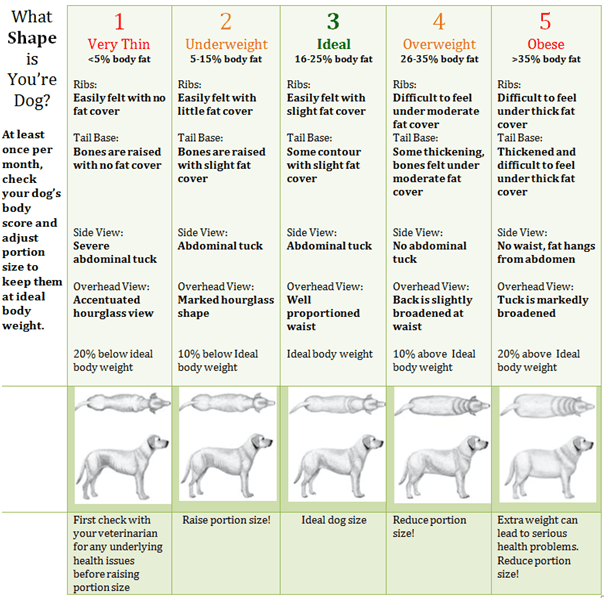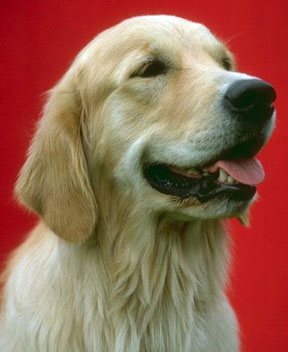 You want the best for your dog, you want them to be healthy and happy and it all starts by keeping an eye on their general day to day condition.
You want the best for your dog, you want them to be healthy and happy and it all starts by keeping an eye on their general day to day condition.
So let’s run through a 7 step dog health check list at home for general awareness of what may be affecting your dog.
Use the following checklist to make a careful inspection of your dog and pick up the early signs of health problems.
1 – Your Dogs Weight:
Using the body condition score table, begin identifying your dog’s ideal body condition and make sure they’re not overweight or underweight. It’s very easy to let your dogs weight rise over time and what you thought was an ok weight on your dog could well be too heavy.
Today the majority of dogs are obese – 63% of dogs in the US – and more likely to develop diabetes, arthritis, hip dysplasia, ligament or tendon injuries, or have strokes, breathing difficulties, and skin problems.
When dogs are a healthy weight their hormones keep the body in a stable state known as homeostasis. But when a dog gains weight, the hormones start to have an inflammatory effect, which over time can have an impact on the dog’s whole physiological system: heart, pancreas, liver, kidneys and immune system. This is the starting point for many chronic diseases, including diabetes, heart disease, and cancer.
Have a look at the body condition score table below. It’s taken from my book Feed Your Dog Better.
Using the body condition score table
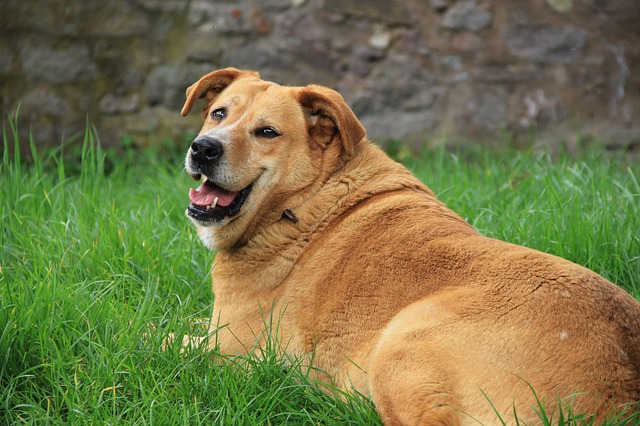 The easiest and fastest way to determine your dog’s correct weight is to check their shape by using a body condition score table. The next step is to determine whether your dog’s curves are in the right proportion.
The easiest and fastest way to determine your dog’s correct weight is to check their shape by using a body condition score table. The next step is to determine whether your dog’s curves are in the right proportion.
Rather than thinking about your dog’s weight, you’re looking at the shape of your dog. To assess your dog’s body type, position yourself over the top of your standing dog. The ideal would be to see curves going in at the hips and not curves that go out.
Place both of your thumbs on either side of your dogs backbone. Now, extend both hands over the rib cage area. The ribs are supposed to be easy to feel under the coat with no excessive fat covering, feeling more like pencils in a soft pencil case.
This time, stand back and look at your dog from the side and then from above: can you see their waist?
Now feel your dog’s belly by running your hands underneath from one end of the chest between the front legs backwards along the belly line towards the back legs. There should be an upward curve and not flat or droop downwards. This is known as an abdominal tuck.
For body type, certain breeds, like Salukis and Bulldogs, can be difficult to judge, but your veterinarian can always give you an objective opinion.
Use the body conditioning score table below to get a good idea of the shape you want your dog to be in. It works for every dog and is normally used by pet professionals.
2 – Your Dogs Ears:
Check your dog’s ears and for any redness, itchiness, mites, dirt, waxy discharge or unusual smells. Ideally you want clean ears with no brown, black or green waxy deposits.
If you find your dog’s shaking their head, holds it to one side, scratches at the ears or rub one side of their head on the carpet or grass it can mean that your dog may well have an ear infection.
3 – Your Dogs Eyes:
Look into your dog’s eyes, are they bright and clear with no redness, jaundice yellow, soreness or running. Eye health is usually related to diet health with poor vitamin and mineral uptake a prime factor.
4 – Your Dogs Nose:
When you think about healthy dogs, you most likely imagine a cool wet nose which is great. But also look out for a nose that’s continually dry or warm and may have crust over the surface or runny and thickened discharge or possible bleeding.
5 – Your Dogs Mouth:
 No one likes rotten smelly breath! And a dog with really bad breath is clearly on the way to disease. It’s telling you your dog has underlying digestive issues, starting at the mouth with plaque on teeth, red gum lines just above the gum-tooth interface, gingivitis and possible gum disease.
No one likes rotten smelly breath! And a dog with really bad breath is clearly on the way to disease. It’s telling you your dog has underlying digestive issues, starting at the mouth with plaque on teeth, red gum lines just above the gum-tooth interface, gingivitis and possible gum disease.
Check inside your dog’s mouth. Teeth should be white with very little excess tartar, a thick brown build-up where the tooth meets the gum. Gums should look healthy salmon pink or rich black, depending on your dogs skin pigmentation, but not red, swollen, infected or bleeding.
6 – Your Dogs Skin and Coat:
Check for any signs of dog skin problems by spreading their coat using your fingers to check for lumps, bumps, crusting, itchiness, scaled or rough skin, black or white spots or infections including hot and inflamed areas.
A dog’s coat is generally thick and shiny and there’s no bald patches, broken hairs, dander or fleas and ticks.
Shedding is normal especially during the summer and autumn but excess shedding leading to vacuuming hair all over the house is not fun and not healthy for your dog.
Heavy shedding often means the hair follicle is not fed enough healthy ‘nutrition’ which causes it to die off all to quickly from starvation of correct nutrients.
Your dog’s skin is the early indicator to what’s ahead
The 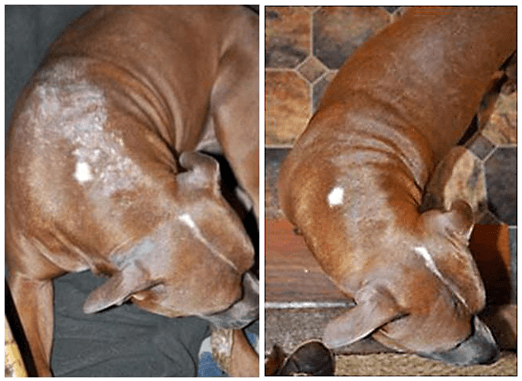 skin is the largest organ of the body – that’s true for humans too – and the only one we can easily get a good look at to know the state of our current health.
skin is the largest organ of the body – that’s true for humans too – and the only one we can easily get a good look at to know the state of our current health.
When problems show up, it’s the skin that usually reveals them first. This is the immune system’s way of dealing with disease, by keeping the problem as far away from the vital internal organs as possible and for as long as possible.
Eventually chronic or persistent problems drive deeper into the body as the toxic overload proves too much for the immune system to fight off. This can result in failure of major body organs, or worse, the phenomenon of rogue cells turning into full fledged cancer somewhere in the body, and today that’s one in every two dogs!
7 – Your Dogs Digestion:
Virtually any disease or deterioration you can about connects to your dog’s dietary regimen, something over which you have nearly complete control.
Food is the most important part of a dogs healthy life. Give your dog healthy food choices and they’ll generally live long and happy lives.
Feed your dog a kibble only diet for long enough and you’ll begin to see deterioration of their health.
Here’s 25 typical health problems a limited diet causes and that you’ll notice:
- Bad gas
- Bad breath
- Allergies
- Blocked anal glands
- Loose foul smelling stools
- Bouts of diarrhea
- Constipation
- Poor coat condition
- Mange
- Excess hair shedding
- Itchy skin
- Candida (yeast overgrowth)
- Ear infection
- Eye infection
- Urinary tract infection
- Blood in stool
- Blood in urine
- Excess paw licking
- Hot spots
- Lack of energy and concentration
- Lack of joint movement
- Joint pain and inflammation (arthritis)
- Eating lots of grass or poop
- Too much twitchy energy
- That classic doggy smell
 You’ll probably recognize many of the problems listed above. They’re the sort of common health problems that dog owners know as part of everyday life, those niggling, can’t-quite-put-your-finger-on-why-they’re-happening health problems that come and go, despite your best efforts.
You’ll probably recognize many of the problems listed above. They’re the sort of common health problems that dog owners know as part of everyday life, those niggling, can’t-quite-put-your-finger-on-why-they’re-happening health problems that come and go, despite your best efforts.
Puppies start out life full of joy and vigor, however, as adults and several years into consuming a kibble only diet, they’re immune system becomes frazzled as allergies, skin and coat problems, digestive complaint, hot spots, diarrhea issues and yeast infections such as ear infection, begin to spoil life.
You may find your dog simply doesn’t have the vitality they once exuded. And while 96% of pet parents in the US feed a kibble diet, diet is responsible for 9 out of 10 health issues in dogs today.
The simple fact is that to actually make a kibble, pet food manufacturers have to leave out certain healthy ingredients and add some unhealthy ones or it couldn’t be made.
And the problem with this is that your dog misses out on some crucial nutrients in their kibble diet, while taking on some they shouldn’t, which means that within just a few years, your now grown pup is suffering one or more of the health problems above.
My aim is to inspire you to boost the nutritional quality of your own dog’s kibble meals, easily, cheaply and with very little effort but with exciting health boosting results.
That’s why I created the Healthier Kibble Diet as part of my book Feed Your Dog Better.
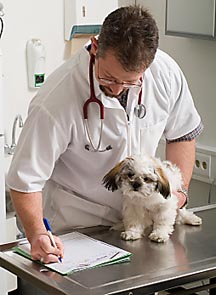 We spend whatever it takes to make our sick dog well so why not put that love and devotion into a healthier diet that will prevent, delay and reduce the need for long term financially and emotionally painful treatment when they’re seniors.
We spend whatever it takes to make our sick dog well so why not put that love and devotion into a healthier diet that will prevent, delay and reduce the need for long term financially and emotionally painful treatment when they’re seniors.
So why not learn about the simple dietary needs of your dog and feed them a nutritionally richer kibble meal for an improved diet that will help keep their immune system better balanced, especially through the senior years.
Following the directions in the book will mean that within weeks of improving your dog’s diet, you’ll notice the scratching subside, the coat feeling softer and cleaner smelling, shedding slows, ears become cleaner, and the smell of your dog’s breath and gas improve.. a lot!
And this happens simply because you added specific extras to your dogs kibble meal, mixed it in and served. And this only takes an extra minute of your day but with outcomes that will make all the difference in the world to your dog and therefore you.
As many pet parents who come to me for help have learned, kibble sustains their dogs life but it can’t provide enough protection from the many growing dog health problems we all see today.
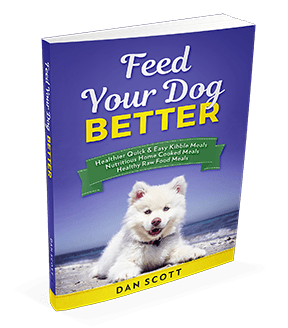 For an across the board whole body health boost, the healthier kibble diet (just 1 part of the ebook, Feed Your Dog Better) ensures your dog is getting more of the vital nutrients missing from a regular kibble diet and a fantastic opportunity to clean up some basic chronic health problems, while adding several quality extra years to your dog’s life.
For an across the board whole body health boost, the healthier kibble diet (just 1 part of the ebook, Feed Your Dog Better) ensures your dog is getting more of the vital nutrients missing from a regular kibble diet and a fantastic opportunity to clean up some basic chronic health problems, while adding several quality extra years to your dog’s life.
Dogs steal our hearts, bring joy and love us unconditionally.. what will you do to give back to your dog today?
Click here to learn more – The Healthier Kibble Diet.
